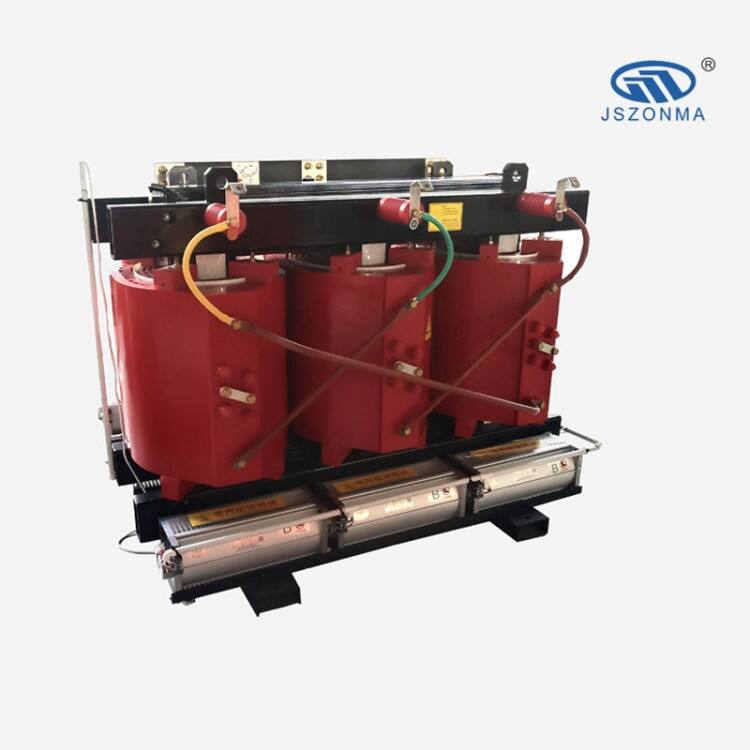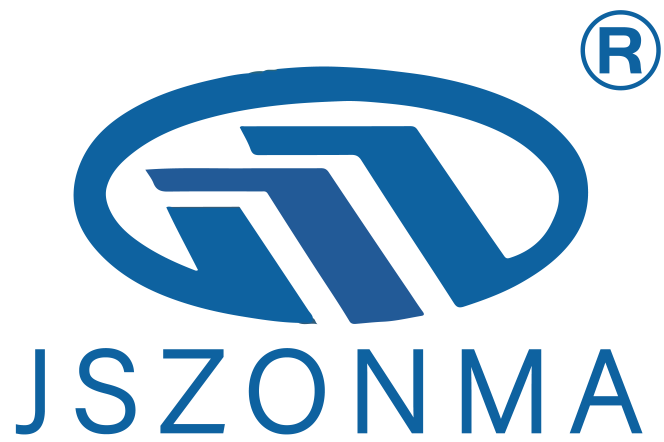Power transformers are critical components in electrical power systems, serving as the backbone of electricity transmission and distribution networks worldwide. These sophisticated devices step voltage levels up or down to ensure efficient power delivery across vast distances and safe utilization in residential, commercial, and industrial applications. Despite their robust construction and careful engineering, power transformers can experience various operational challenges that affect system reliability and performance. Understanding these common issues and their effective solutions is essential for maintaining optimal electrical infrastructure and preventing costly downtime.

Modern electrical systems rely heavily on transformer technology to manage power flow efficiently. When transformers malfunction, the consequences can range from minor service interruptions to major blackouts affecting thousands of customers. Proactive identification and resolution of transformer problems not only ensure continuous power supply but also extend equipment lifespan and reduce maintenance costs. This comprehensive examination explores the most prevalent transformer issues encountered in the field and provides practical solutions for electrical professionals.
Overheating Issues in Power Transformers
Causes of Transformer Overheating
Transformer overheating represents one of the most serious threats to equipment longevity and system reliability. Excessive heat generation typically stems from increased electrical losses within the transformer core and windings. These losses occur when the transformer operates beyond its rated capacity, experiences harmonic distortion, or suffers from poor ventilation systems. Additionally, ambient temperature fluctuations and inadequate cooling mechanisms can exacerbate overheating conditions, leading to accelerated insulation degradation and potential catastrophic failure.
Internal factors contributing to overheating include loose connections, which create high-resistance paths and generate excessive heat through I²R losses. Contaminated transformer oil loses its cooling effectiveness and thermal conductivity properties, reducing the system's ability to dissipate heat efficiently. Core lamination issues, such as inter-laminar insulation breakdown, can create eddy currents that generate additional heat within the magnetic core structure.
Prevention and Mitigation Strategies
Effective thermal management begins with proper sizing and installation of cooling systems appropriate for the transformer's rating and environmental conditions. Regular maintenance of cooling fans, radiators, and oil circulation pumps ensures optimal heat dissipation. Temperature monitoring systems with alarm capabilities provide early warning of thermal excursions, allowing operators to take corrective action before damage occurs.
Load management practices play a crucial role in preventing overheating. Implementing load forecasting and scheduling helps maintain transformer loading within acceptable limits. Installing additional transformer capacity or parallel units can distribute load more evenly and reduce thermal stress on individual units. Regular oil testing and replacement maintain optimal cooling properties and extend transformer life significantly.
Insulation System Deterioration
Types of Insulation Failures
Insulation system integrity is fundamental to power transformer operation and safety. Electrical insulation in transformers includes solid materials like paper, pressboard, and composite materials, as well as liquid dielectrics such as mineral oil or synthetic fluids. Degradation of these materials occurs through multiple mechanisms including thermal aging, electrical stress, moisture ingress, and chemical contamination.
Partial discharge activity within insulation systems creates localized heating and chemical byproducts that further accelerate degradation. This phenomenon typically occurs at points of high electrical stress, such as sharp edges, voids in solid insulation, or areas where different insulation materials interface. Over time, partial discharge activity can create conductive paths that lead to complete insulation failure and transformer short circuits.
Diagnostic and Maintenance Approaches
Modern diagnostic techniques enable early detection of insulation system problems before they result in catastrophic failures. Dissolved gas analysis of transformer oil provides valuable insights into internal conditions by identifying specific gases produced by different types of insulation breakdown. Power factor testing measures the dielectric losses in insulation materials, indicating their overall condition and remaining service life.
Preventive maintenance programs should include regular moisture content monitoring, as water contamination significantly reduces insulation effectiveness. Oil filtration and regeneration processes remove contaminants and restore dielectric properties. Periodic application of vacuum treatment removes dissolved gases and moisture, improving overall insulation performance and extending transformer service life.
Winding Problems and Solutions
Mechanical Stress and Deformation
Transformer windings experience significant mechanical forces during normal operation and fault conditions. Short-circuit events create enormous electromagnetic forces that can cause winding displacement, deformation, or complete failure. These forces are proportional to the square of the fault current magnitude, making high-capacity transformers particularly susceptible to mechanical damage during system disturbances.
Gradual winding movement can occur over years of operation due to thermal cycling and vibration. This movement may create loose connections, reduce insulation clearances, or alter the transformer's electrical characteristics. Manufacturing defects in winding support structures or clamping systems can accelerate these problems and reduce the transformer's ability to withstand mechanical stresses.
Detection and Repair Methods
Frequency response analysis provides a powerful tool for detecting winding deformation and mechanical problems. This technique compares the transformer's frequency response characteristics over time, revealing changes in winding geometry or connection integrity. Sweep frequency response analysis can identify specific types of problems such as winding movement, short-circuited turns, or core displacement.
When winding problems are detected, repair options depend on the severity and location of the damage. Minor winding adjustments may be possible through specialized repair techniques, while severe deformation typically requires complete winding replacement. Implementing protective relay schemes that limit fault current magnitude and duration can prevent future winding damage and extend transformer service life.
Core Lamination Issues
Core Loss Increases
Transformer cores consist of thin electrical steel laminations designed to minimize eddy current losses while providing an efficient magnetic flux path. Over time, these laminations can experience inter-laminar insulation breakdown, creating electrical connections between adjacent layers. This condition dramatically increases core losses and generates excessive heat that can damage the entire transformer.
Mechanical damage to core laminations can occur during transportation, installation, or maintenance activities. Burrs, scratches, or gouges in the lamination surface can create localized hot spots and accelerate insulation breakdown. Additionally, core bolt loosening can create mechanical vibration and further damage to the lamination structure.
Core Maintenance and Repair
Core loss measurements during routine testing can identify deteriorating lamination conditions before they cause significant problems. Elevated no-load losses or abnormal temperature rises indicate potential core issues requiring investigation. Thermal imaging surveys can locate specific areas of lamination problems by identifying hot spots on the transformer exterior.
Repair of core lamination problems typically involves careful disassembly and inspection of affected areas. Damaged laminations must be replaced or repaired using appropriate insulating materials and techniques. Core re-stacking requires precise alignment and proper torque application to core bolts to ensure optimal magnetic performance and mechanical stability.
Oil-Related Problems
Oil Contamination and Degradation
Transformer oil serves multiple critical functions including electrical insulation, heat transfer, and arc extinction. Oil contamination can occur through various pathways including moisture ingress, particulate matter introduction, and chemical breakdown products from normal aging processes. Water contamination is particularly problematic as it dramatically reduces the oil's dielectric strength and can cause bubbling during overload conditions.
Oil oxidation creates acids and sludge that can attack insulation materials and reduce cooling effectiveness. High operating temperatures accelerate oxidation processes, while metal contamination from internal components can catalyze these reactions. Poor oil handling practices during installation or maintenance can introduce contaminants that compromise transformer performance.
Oil Treatment and Replacement
Regular oil testing programs monitor key parameters including dielectric strength, moisture content, acidity, and dissolved gas concentrations. These tests provide early warning of developing problems and guide maintenance decisions. Oil reclamation processes can restore degraded oil to near-original specifications through filtration, degassing, and chemical treatment methods.
When oil contamination exceeds acceptable limits, complete oil replacement may be necessary. This process requires careful handling to prevent moisture ingress and proper disposal of contaminated oil according to environmental regulations. Vacuum filling techniques ensure complete air removal and optimal oil impregnation of insulation materials.
FAQ
What are the most common signs that a power transformer is experiencing problems
The most obvious warning signs include unusual noises such as buzzing, crackling, or humming sounds that differ from normal operating noise. Visual indicators include oil leaks, discoloration of bushings or tank surfaces, and visible arcing or sparking. Temperature increases beyond normal operating ranges, detected through thermal monitoring or infrared inspection, also indicate potential problems. Additionally, electrical symptoms like voltage irregularities, harmonic distortion, or protective relay alarms suggest internal transformer issues requiring immediate attention.
How often should power transformers undergo preventive maintenance
Preventive maintenance frequency depends on the transformer's age, operating environment, and criticality to system operation. Generally, annual inspections should include visual examination, oil testing, and basic electrical measurements. More comprehensive testing including dissolved gas analysis and insulation assessment should occur every three to five years for critical units. Older transformers or those operating in harsh environments may require more frequent attention, while newer units in clean environments can often extend maintenance intervals safely.
Can power transformer problems be predicted before they cause failures
Modern diagnostic techniques enable early detection of many transformer problems before they result in catastrophic failures. Dissolved gas analysis can identify incipient faults months or years before they cause outages. Partial discharge monitoring detects insulation deterioration in its early stages. Temperature and load monitoring systems provide continuous assessment of transformer health. When combined with historical trending and expert analysis, these diagnostic tools can predict many failure modes with sufficient lead time for planned maintenance or replacement.
What factors determine whether a problematic transformer should be repaired or replaced
The repair versus replacement decision depends on multiple factors including the extent and type of damage, transformer age and condition, repair costs compared to replacement costs, and the availability of suitable replacement units. Economic analysis should consider not only immediate costs but also long-term reliability and maintenance requirements. Critical system transformers may warrant more extensive repairs to avoid extended outages, while less critical units might be candidates for replacement when repair costs approach 50-60% of replacement value. Additionally, obsolete designs or units with recurring problems often justify replacement over continued repairs.
Table of Contents
- Overheating Issues in Power Transformers
- Insulation System Deterioration
- Winding Problems and Solutions
- Core Lamination Issues
- Oil-Related Problems
-
FAQ
- What are the most common signs that a power transformer is experiencing problems
- How often should power transformers undergo preventive maintenance
- Can power transformer problems be predicted before they cause failures
- What factors determine whether a problematic transformer should be repaired or replaced

